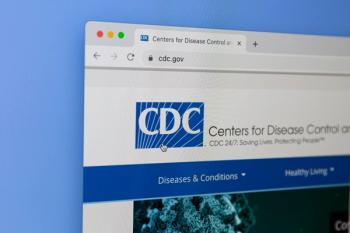
- September 2024
- Volume 90
- Issue 09
Pharmacist Spotlight: Anjeza Fero, PharmD, RPh
Tell us about your career and what you do now.
I am a pharmacist working with Inizio Engage, where I contribute to the risk evaluation and mitigation strategy program for Alexion Pharmaceuticals, now part of AstraZeneca. I provide education and guidance to physicians and pharmacists on the safe use of medications for rare diseases, ensuring compliance with FDA guidelines to uphold drug safety standards. Additionally, I deliver presentations on safety protocols, emphasizing the critical importance of vigilance in managing medication risks and preventing complications in rare disease treatments.
At the University of Connecticut, I am a professor in the Department of Physiology and Neurobiology. I teach anatomy and physiology, including practical laboratory sessions. I integrate clinical case studies into the classroom, which helps students connect theoretical knowledge with practical applications. This approach enhances their preparation for future health care careers by deepening their understanding of how academic concepts translate into real-world scenarios.
How did you become interested in pharmacy?
My interest in pharmacy began in childhood during visits to a local independent pharmacy in my hometown of Pogradec, Albania. I was intrigued by the variety of products on the shelves and impressed by the staff ’s professionalism and the pharmacy’s cleanliness. Their caring and accessible nature left an impression on me. I witnessed the difference the pharmacists made in people’s lives and was deeply inspired. Additionally, my passion for skin care and medicine and my commitment to promoting overall health further led to my decision to pursue a career in pharmacy.
How are pharmacists in academia contributing to the greater body of medical research and patient care?
Pharmacists in academia impact medical research and patient care by educating and mentoring the next generation of health care professionals. I focus on deepening students’ understanding of anatomy and physiology, integrating current scientific advancements into the curriculum. This approach ensures that students are well prepared to apply their knowledge in clinical settings and effectively address the complexities of patient care.
Moreover, laboratory sessions build on lecture material by providing practical, hands-on experience with advanced scientific technology. Through experiments, students deepen their understanding of human biology and gain essential skills. This hands-on experience prepares them to contribute effectively to patient care and medical research.
How do you bridge the gap between academia and clinical pharmacy work?
To bridge the gap between academia and clinical pharmacy, I incorporate practical elements into my teaching. By using real organ specimens and clinical case studies, I provide students with hands-on experience that mirrors current health care practices. This approach ensures that students can directly apply their theoretical knowledge to real-world situations, enhancing their readiness for professional roles in health care.
Articles in this issue
over 1 year ago
Advanced Health Pharmacy Provides Personalized Careover 1 year ago
Pharmacists Can Play a Role in Treating Eating Disordersover 1 year ago
Prepare for Autumn Immunizationsover 1 year ago
Pharmacy Technicians Can Master Professional Integrityover 1 year ago
September 2024 Condition Watch: Sleepover 1 year ago
Wegovy From Novo Nordiskover 1 year ago
Medication Nonadherence Poses Risks to Patient SafetyNewsletter
Stay informed on drug updates, treatment guidelines, and pharmacy practice trends—subscribe to Pharmacy Times for weekly clinical insights.














































































































































































































